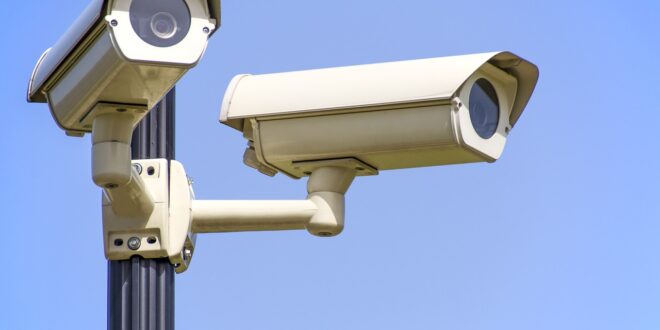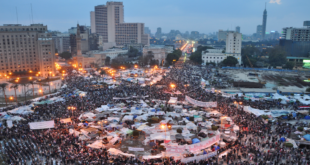Serbia is already seeing an erosion of civil rights and liberties, democracy and the rule of law – and many fear the rapidly expanding use of advanced technologies will be directed against them rather than criminals and terrorists.
The emergence of digital surveillance performed by state actors coincides with the rise of authoritarianism and the decline of democracy, the rule of law and civil rights and freedoms. That is why Serbia is considered a “hybrid regime”.
State surveillance reached extremes during the mass anti-government protests in 2019, when the police installed 1,000 Huawei surveillance cameras across Belgrade equipped with sophisticated facial and car plate recognition software. The authoritarian model of responding to the pandemic also included tracking the movement of Serbian citizens returning from hotspots like Italy.
Meanwhile, Serbian security institutions have procured many digital surveillance tools, including the most intrusive equipment, capable of secretly penetrating and controlling users’ devices and analysing huge amounts of data in detail.
After the Pegasus scandal became widely known, the Toronto-based Citizen Lab reported that Serbia’s intelligence agency, the BIA, used Israeli NSO Group’s Pegasus spyware and Cytrox’s Predator.
The BIA previously used FinFisher spyware whose server was located inside the public company Telekom Srbija. The notorious Clearview AI should also be added to the list, since investigative reports revealed it was being used by law enforcement.
The number of actors in Serbia using digital surveillance equipment and software has expanded to state-owned enterprises and government bodies not mandated to provide security, such as the state-owned electric utility power company, EPS, and the former Ministry for Trade, Tourism and Telecommunication, MTTT.
In 2022, the MTTT renewed licences for the Maltego, Mozenda and Social Links software for market inspection purposes. The ministry has previously shown interest in purchasing software from Israeli firm Cognyte, which is mainly used for targeting journalists, regime critics and human right activists.
Although the reasons for the acquisition and use of advanced technologies vary – from prevention of organized crime, terrorism and sexual abuse of minors on the Internet to the protection of intellectual property and the fight against piracy – they have one thing in common: there is no legal ground for their introduction and use.
Since the government is not inclined to buy intrusive technologies directly from vendors, a number of private security companies based in Serbia, such as IntellSec and Lanus Ltd (now Devellop Ltd), act as intermediaries. Others, like Vlatacom Ltd, design and sell their own interception/intrusion software at home and abroad. However, the role of private actors remains unexplored.
The proliferation of digital surveillance in Serbia is opaque; only reports on individual cases exists. The broader picture of the growing digital surveillance system is scarce, making it difficult for citizens to understand the dangers of such infrastructure.
Countering a ‘coloured revolution’ in Serbia
Under the rule of the Serbian Progressive Party, Serbia has introduced cutting-edge technology to keep watch on citizens and political rivals. China-style smart cameras (and base stations) spring up after every protest in Serbia. The President and Prime Minister could use recent shootings and social protests against violence to advance problematic laws and policies aimed at control, rather than security.
The most controversial measure is the Bill aimed at legalizing biometric surveillance in Serbia. The idea of legalizing biometric surveillance to “counter terrorism and organized crime” was (re)introduced in 2021 after ecological protests and roadblocks against lithium mining – the Rio Tinto project.
When the Bill, which the Ministry of Interior drafted almost in secrecy, became known to the public, massive dissatisfaction with the introduction of biometric surveillance, among other things, forced the Ministry to withdraw the proposal. Aleksandar Vulin, the then Interior Minister, called opponents of the Bill mercenaries of “a few foreign intelligence services” who want to “stage violent rallies with the aim of destabilizing Serbia”.
Soon after the withdrawal of the Bill, information leaked out that the Serbian and the Russian Ministries of Interior had created a “working group for countering coloured revolutions” [referencing the so-called ‘orange’ 2004 revolution in Ukraine, among others] and that the Serbian police were seeking special training on cybersecurity from Russia – steps that caused concern among civil society.
In the present-day political context, the introduction of a mass biometric surveillance system in Serbia remains the greatest threat to privacy and data protection, but it also has a deterrent effect on freedom of assembly and association, as well as freedom of expression.
Police authorities deny that smart cameras record people and process biometric data, but the evidence suggests otherwise. In 2019, Nebojša Stefanović, the then Interior Minister, used photos from surveillance cameras to intimidate the protesters and deter them from further rallies. Two years later, thousands of Serbian citizens received court fines for roadblocks during the ecological protests, even though they had not been identified by the traffic police.
To calm down the situation, the Commissioner for Information of Public Importance and Protection of Personal Data launched an investigation. This concluded that the police had not used facial recognition technology during the rallies, but that persons had been identified “based on the immediate observation of police officers in line with the Misdemeanour Law”. Unlike people from urban areas, who are more resilient to state oppression, people from smaller communities felt bewildered and frightened, which could impact the number of activists involved in future protests.
Permanent, non-selective, China-style, surveillance is unacceptable in a society that aspires to become democratic and a member of the European Union. This is why civil society in Serbia is united in urging the government to declare a moratorium on the use of mass biometric surveillance technologies and systems.
Public pressure has raised the bar for introduction of advanced technology, but that hasn’t stopped the police from acquiring Swedish Griffeye face recognition software and restarting public consultations to fine-tune the new Internal Affairs Act. Cybersecurity experts highlight that “the alarming number of intrusive software and big data tools require transparent regulation of such systems to ensure the protection of fundamental human rights”.
 Eurasia Press & News
Eurasia Press & News



